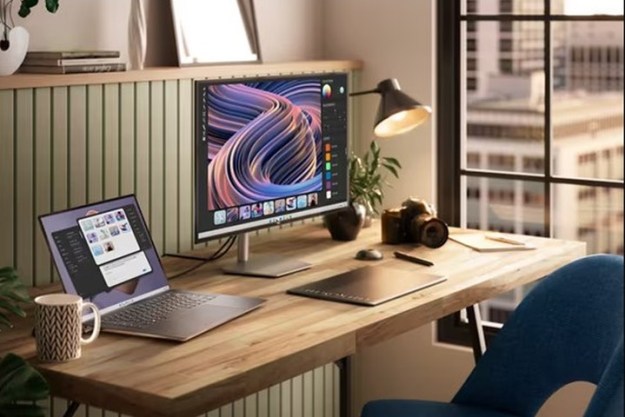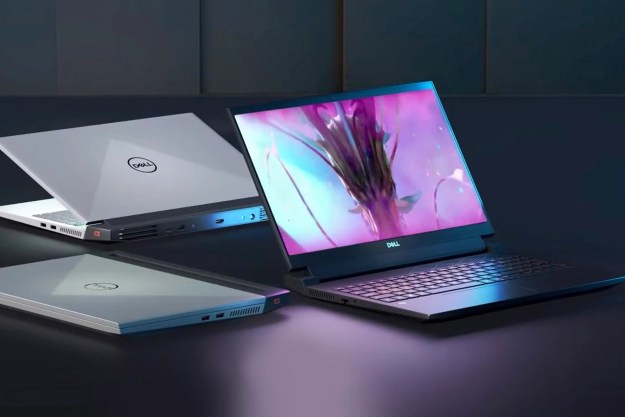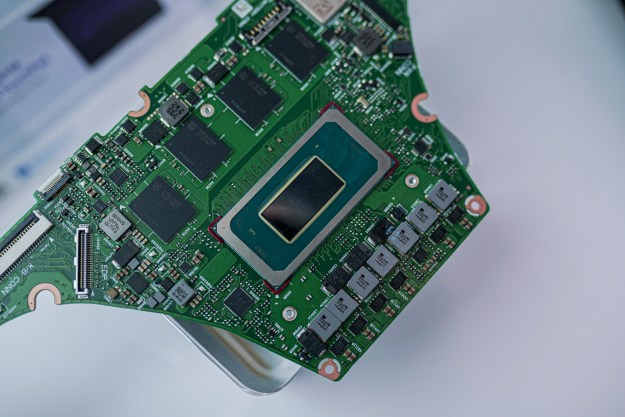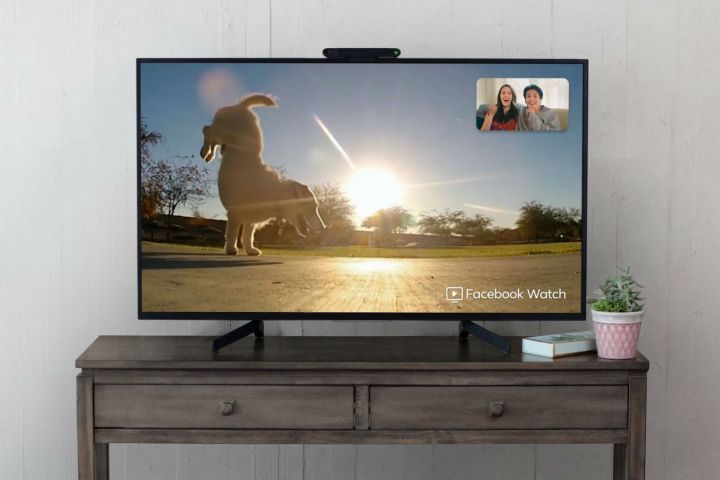
Facebook desperately wants to move beyond its social network roots, and now it is expanding its line of Portal smart home products. The first-generation Portal and Portal Plus were meant to make video calling easy, and now Facebook is unveiling three new Portal models to take over your living room and home with that same purpose: Portal TV, a new Portal, and Portal Mini.
The 10-inch Portal ($179) and the 8-inch Portal Mini ($129) are nothing new. On idle, these Portals act like digital photo frames that display images from a Facebook album or Instagram feed on 1200 x 800-pixel displays.
The highlight of the demonstrations was the $149 Portal TV, available on November 5. It mounts right on your television, not unlike how a webcam would sit on top of a monitor. And just like that, you have the convenience — and potential concerns — of Facebook right in your living room.
Approachable technology
Like the previous Portal devices, the latest devices lean on Facebook’s work in artificial intelligence to make them more intuitive to use. Just as Facebook is using a lot of powerful technology, the company took a cautious Apple-like approach to privacy and security.

Artificial intelligence plays a key role in helping the camera work. Portal TV’s camera can automatically pan and zoom in on the active subject when it detects voice or motion, and Facebook’s product team was careful to point out that nothing is stored or recorded on Facebook’s servers.
The Portal and Portal Mini each come with a 13-megapixel camera with a 114-degree field of view, while Portal TV has a 12.5-megapixel camera with a slightly wider 120-degree field of view.
When the camera detected voice, it would pan and zoom in on the person talking, but you can even configure Portal to only track a specific individual. The latter case would be useful if you are video conferencing with grandparents when showing off your child’s gymnastics routine, as an example.

In another privacy-first move, Facebook stated that Portal doesn’t track individuals by their faces. However, the company can analyze a frame and recognize a face, which is useful for applying Snapchat-like augmented reality filters, like displaying necklaces and glasses on people. The effects add a whimsical element to an otherwise mundane video calling session.
For the most part, Portal product manager Elliott Poppell claimed that Portal relies on shirts, rather than faces, to do most of its tracking for camera panning purposes.
The camera will still be able to follow you as you move around, even when you have your back turned towards the lens.
A.I. software, which is locally run on the device so nothing gets sent to Facebook, according to head of Portal Ryan Cairns, views your body as a rudimentary stick figure, similar to how Disney animated the beast in its live-action Beauty and the Beast, and the camera tracks you and your joint based on this A.I. map.
According to Poppell, using the A.I. map of your body, which the camera identifies based on the shirt you’re wearing, is a superior way of tracking than by facial tracking alone. That way, the camera will still be able to follow you as you move around even when you have your back turned towards the lens. If Portal relied solely on facial recognition, it would not be able to track you when you’re showing a side profile or if your back was facing the camera, he explained.

All three models come with build-in speakers — the Portal TV has a single full-range speaker, while the other two Portals come with dual drivers and a single bass unit — you’ll likely rely on your TV’s speaker system when using the Portal TV to make calls.
With the Portal and Portal Mini, the built-in audio sounded fine, with the speakers delivered sufficiently loud volume for calls. Audio fidelity was a little lacking, however, compared to dedicated smart speaker systems like the Amazon Echo, and voice audio sounded hollow in my brief interaction with both units.
A tracker or a stalker?
If you think this sounds creepy, you’re not alone. As Facebook as still reeling from recent privacy missteps, the company was careful to note the company does not have access to your video calls, nor does it record your video or audio feed. “Facebook Messenger calls are encrypted in transit, while WhatsApp calls are encrypted end-to-end,” Poppell said.
Even though the latest Portals now allow you to communicate using Messenger and WhatsApp, the setup is still clunky with separate contact lists for each service.
If you want to chat with Poppell, for example, you’ll need to decide which platform to initiate the call, go to the appropriate list, and then select his name. Once Facebook migrates to a unified platform, all of this should hopefully be easier.

After a video call ends, Portal will ask you for feedback on call quality with up to a five-star rating. In a subtle response to a prior controversy where employees gave Portal hardware high reviews, the product team running the demos were careful not to review the call quality and dismissed the popup with no rating given.
Facebook’s built-in privacy means that you can’t switch between Facebook accounts with a spoken voice.
Other security features include a three-position hardware switch that can toggle the microphone and camera for full privacy. You can set the switch to disengage the camera and microphone, or move it over to one position to turn on the mic and keep the camera off, or enable both mic and video for calls.
The switch was easy to operate and provided a secure hardware-level toggle for the recording elements, and all three Portal models come with a red LED indicator light that shows when the camera is off for a quick visual check.

And unlike other smart speakers, Facebook’s built-in privacy means that you can’t switch between Facebook accounts with a spoken voice. Even though the devices can support multiple Facebook profiles and accounts, you’ll need to toggle through them using the ergonomically shaped bulbous remote on Portal TV or the on-screen interface on the Portal devices with built-in screens.
Facebook will also introduce a number of augmented reality games with Portal TV. One of the games allows you to play the role of a bunny where you catch objects flying at you with your mouth. According to Cairns, the purpose of Portal is to leverage AR with games, so titles made for Portal won’t rely on the remote control unlike on consoles. The strategy is not unlike what Snapchat is doing with AR games.

And if you’re giving Portal to tech-challenged users, the device relies on HDMI-CEC to allow the input to quickly switch over to Portal if a call comes in. This way, grandma won’t have to switch between the various inputs on her TV.
“You’ll know when Portal is recording by looking at the screen,” Cairns said, so it was important to show when it was not recording. With the camera engaged, you can summon Portal with a “Hey Portal” wake-up command. Portal even has Amazon Alexa built-in, though the devices are built using Google’s Android Open Source platform.
Thankfully, with the far-field microphones — a four-mic array on the Portal with displays and an 8-mic array on the Portal TV — the devices can pick up your voice without requiring you to scream, even when used from across the room.
Not a Netflix substitute
Though they’re built for video conferencing, Facebook’s latest Portals are designed to conquer the living room by providing a social experiencing watching television. With picture-in-picture mode, you can choose a video to watch together with someone on a video call on Facebook Watch, and you can react to the video together.
When Portal senses you’re talking, it would turn down the video volume to highlight your spoken comment of the content.
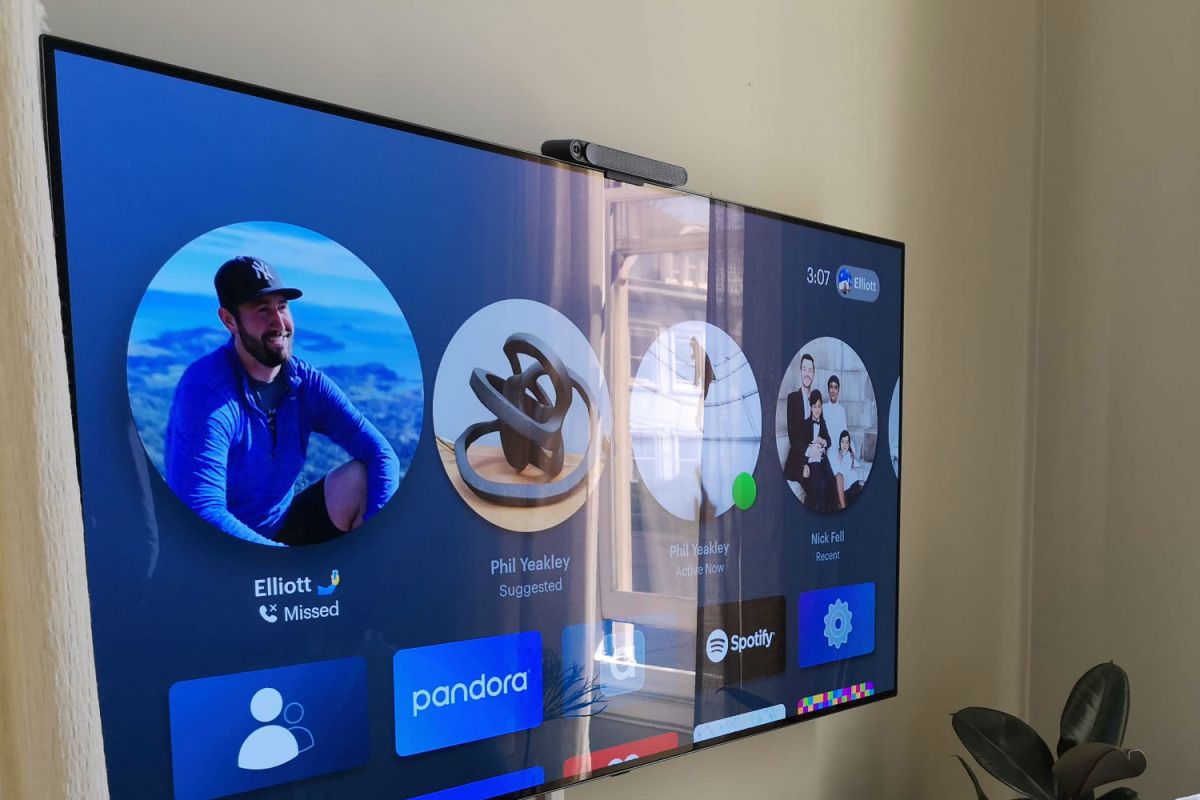
At launch, Facebook said that its social watch feature only works with its own content. However, given the newly announced partnerships to allow videos from Amazon Prime, Showtime, and CBS Local to stream on the Portal hardware, it’s not hard to imagine Facebook wanting to build partnerships to bring social television to third-party content partners down the road.
Even though Facebook doesn’t intend on turning Portal into yet another streaming device, if its social watching strategy proves successful, it would give the company an advantage over rivals, like Google’s YouTube TV and Apple’s TV+ — or even devices like Roku and the Amazon Fire TV.
Despite its focus on privacy with Portal, the company confessed that — like its social media products — it will still track which videos you view to help with targeted ads. At least they’re being honest.
